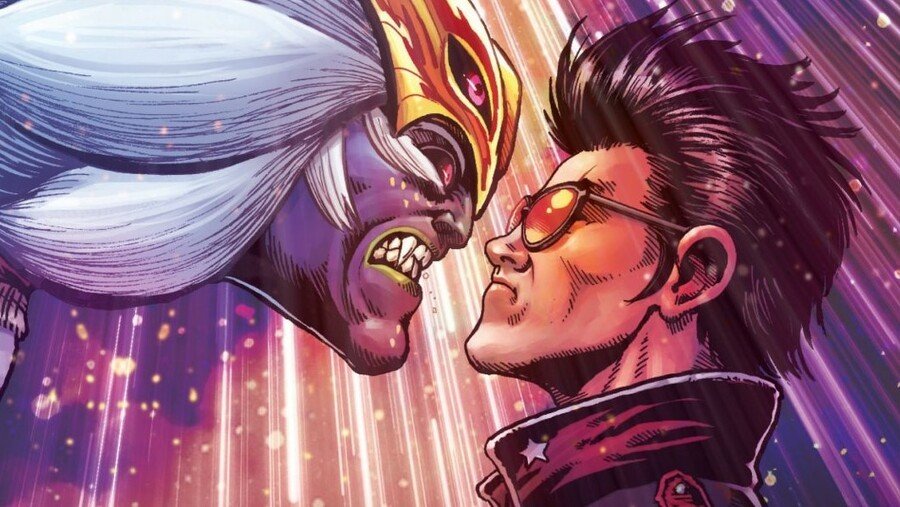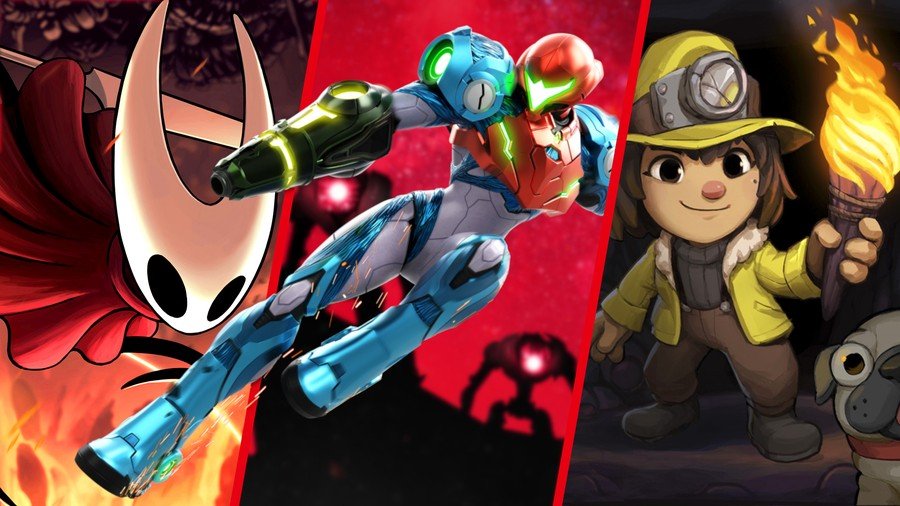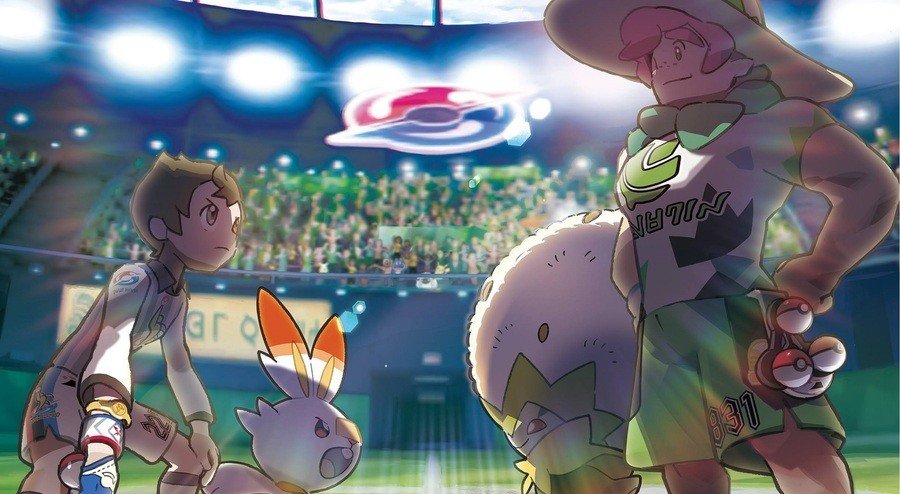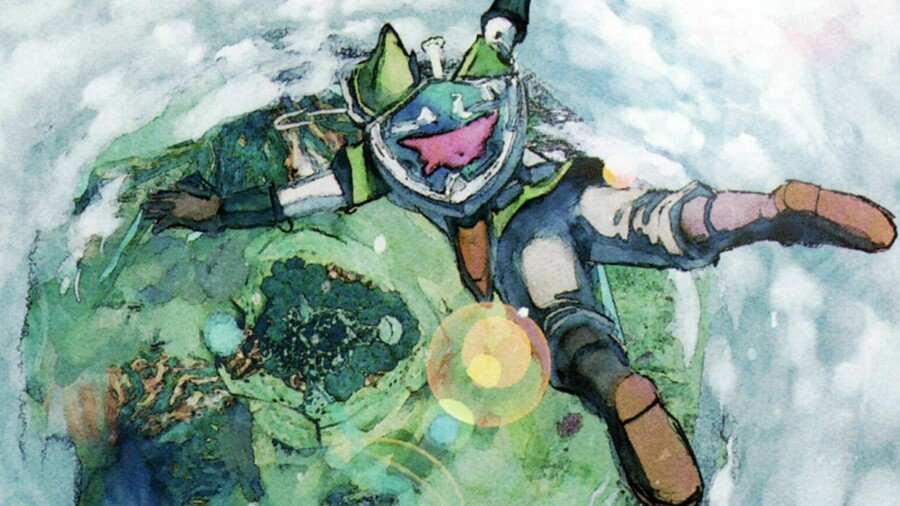
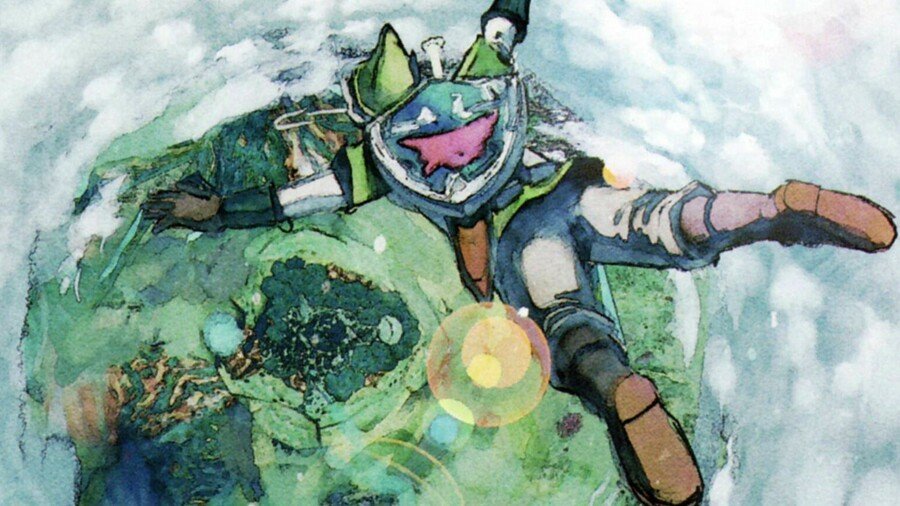
Over the holidays we’re republishing some of our best features, interviews, opinion pieces and talking points from the previous 12 months from staff and contributors alike — articles that we feel represent our best of 2021. In them you’ll find our usual mix of thoughtfulness, frivolity, retro expertise, gaming nostalgia, and — of course — enthusiasm for all things Nintendo.
To celebrate the 35th anniversary of The Legend of Zelda, we ran a series of features looking at a specific aspect (a theme, character, mechanic, location, memory or something else entirely) from each of the mainline Zelda games. Here, Kate compares Skyward Sword to a corridor, or something…
Skyward Sword. A two-word title that strikes fear into the heart of many. But worry not, my dear Zelda-loving/hating friends – I come to ‘bury’ Skyward Sword, not to praise it. Some of our Zelda essays have been about how much we love a particular game, and don’t get me wrong — I am a Skyward Sword apologist — but this is not one of those essays. I want to talk, instead, about an interesting feature of the most divisive Zelda game – its fascination with liminality.
Ah, liminality: the friend to all university essay-writers and pretentious games journalists alike. The term comes from the Latin for “threshold” — limen — and that’s exactly what it means: a space between. A liminal space is the threshold between doing something or being somewhere, and what comes next, a space that — perhaps unsurprisingly — can elicit feelings of excitement, reverence, trepidation, or fear.
It can be a place in time — a sunset, for example, which is a liminal space between night and day — or a literal place, like a waiting room, a car park, or a hallway. It can even be a feeling that’s hard to pin down, a feeling as though you’re stepping from the past into the future, like when you take your final exam in university and you think to yourself, “wow, I’ll never have to write another essay ever again,” and then you write 2,000 words on liminality in video games even though no one asked you to. Something like that, you know.
Zelda games are full of liminal spaces. The Temple of Time is a big one — the threshold between child and adult, mortal and divine, loud and quiet — but the smaller, less obvious ones are just as beautiful. There’s the Kokiri Forest, the last monster-free area in Hyrule, where the Kokiri remain in the perpetual state of childhood, like Peter Pan. Later on in Ocarina of Time, Dampé mans the creepy graveyard, and eventually even crosses the threshold between life and death himself, becoming a ghost like those he guards.
In Minish Cap, the portals to the world of the Picori are perfect liminal spaces: hollowed-out stumps and pots that shrink Link into mini-Link, a transformation which takes place in a perfect sunbeam, almost like a temple. And then there’s Majora’s Mask, a game so dang obsessed with liminality that it would be easier to find an example within of a non-liminal space.
But we’re not talking about Majora’s Mask today. We’re talking about Skyward Sword, and you already know my feelings on it (it’s good, actually), so rather than making an impassioned case for the game that we’ll all presumably be replaying this summer, I want to talk instead about how Skyward Sword uses liminal spaces to kickstart the legend of Zelda that we all know so well.
We begin Skyward Sword with a story of good vs evil. A disembodied voice tells us the story of demons plaguing the newly-born world: “The earth cracked wide and malevolent forces rushed forth from the fissure.” Alright, that’s pretty darn liminal – the forces of evil create a literal passage from the realm beneath to the land above. But then, of course, to protect the humans of the land, the goddess Hylia sends them up above the clouds, to Skyloft – a place neither on land, nor truly belonging to the sky. Since then, the Hylians have dwelled there for ages, and the legends of the world below have been lost.
So, immediately out of the gate, we have three realms: the place below, where evil lives; the place above, where Skyloft is; and the place in-between, the land that would become Hyrule. But perhaps this is a good time to pause, and discuss why liminality matters, and why it’s used so heavily in Skyward Sword and all other Zelda games.
Placing the players in a liminal space is not just about creating the feeling of unease or of anticipation, but of telling a story of transition.
Many heroic legends (and stories in general) are about transition. Becoming a hero is far more interesting than already being one, after all. Liminality and legend go hand-in-hand, because both are all about rituals – the ritual of becoming, the ritual of discovering, the ritual of moving towards the next thing. Liminal spaces set the tone for something big happening, while you’re still in the deep breath beforehand.
Being in a liminal space, like Skyloft, means that you don’t belong – you’re only there until the next thing comes along. It’s that sense of not-quite-belonging that drives Link on his quest – things cannot stay perfect and idyllic when you’re only halfway to the goal. Either you change where you are, or something will change it for you.
Because liminal spaces are often things like waiting rooms, petrol stations, and that bit right before you fall asleep, they often come with feelings of nervousness and tension. There’s a sense that you’re expecting something to happen, because while you wait, you’re suddenly made vulnerable. That tension can be leveraged into a cool story very easily. The most exciting thing a game can offer is a vast unknown, ready to be plundered for its secrets and mysteries, just slightly out of reach – and Skyward Sword’s expanse of clouds that hide the earth are exactly that.
Link himself is on the verge of adulthood, as he usually is in Zelda games. He also has really creepy lips, but that’s not relevant to the thesis of this article, I just wanted to mention it. And, because I’ve really got to drive this point home, his day begins in a nightmare – and dreams are a liminal space between awake and asleep, where you are both at once.
Let’s skip forward a little. Link travels beneath the clouds, and lands himself on the world below, where monsters (which have conveniently evolved to require slicing in a particular direction) abound. Even further into the story, Link will break through the boundaries of clouds elsewhere to find the hidden Isle of Songs, the boundaries of the spirit world to enter the Silent Realm, and the boundaries of time itself in Lanayru Desert – all as the embodiment of evil, The Imprisoned, attempts to break free of the boundaries of its cell. And what are boundaries but (you guessed it) liminal spaces that exist to keep two things separate?
Every obstacle to both Link and Demise — the game’s Big Bad — lies between them, before they even know it. Every time Link breaks the guard of Ghirahim, or opens a new door, he moves closer to Demise. Every time Demise breaks free of the seal, or attempts to destroy the Gates of Time, he moves closer to his goal of obtaining the Triforce, but unknowingly closer to his final, impassable hurdle: the Hero, Link
(And, by the way, the Triforce itself exists as a whole triangle broken up by a lovely liminal space right in the centre. Also, the Goddess Harp that’s instrumental — ha — to the plot? An interesting choice of instrument – perhaps one of the very few that are played by strings between something, rather than on top of something. This theme goes deep. Or maybe I just have a fine-tuned sense of how to stretch out an analogy.)
It’s all Matryoshkas within Matryoshkas, all the way down to the heart of it, the heart of every Zelda game: the final battle between courage and power, light and dark, good and evil. There are liminal spaces between the two in life, of course — the grey area where people are neither wholly good nor wholly bad — but Skyward Sword, like all Zelda stories, and all heroic legends, is about breaking through all of that and discarding everything grey until there are only two truths left: the Hero, and the Villain.
So, there you have it. Skyward Sword is all about breaking through boundaries, dwelling in the spaces in-between, and the tension of transition. Perhaps some of you are thinking, “this essay is a little more than a janky motion-controlled Zelda game deserves,” and you’re probably right – but, let’s be honest, games journalism is most commonly just a big ol’ nerd writing about beautiful toys for grown ups, and we take what we can get.
As an entry in the larger series, Skyward Sword itself is a liminal Zelda game: it’s very few people’s favourite, but it’s certainly not the worst; it came at the very tail end of the Wii’s lifecycle, just as Nintendo was about to transition to the Wii U; and, what’s more, it was the game that came right before Breath of The Wild’s open, borderless world. Skyward Sword is full of limitations, gates, doors, hurdles, and boundaries, and that’s a large part of the reason why people don’t like it. But it’s also what makes the story so quintessentially Zelda, even as it throws a lot of convention out the window – and what made Breath of the Wild feel so unusually, unexpectedly free.
